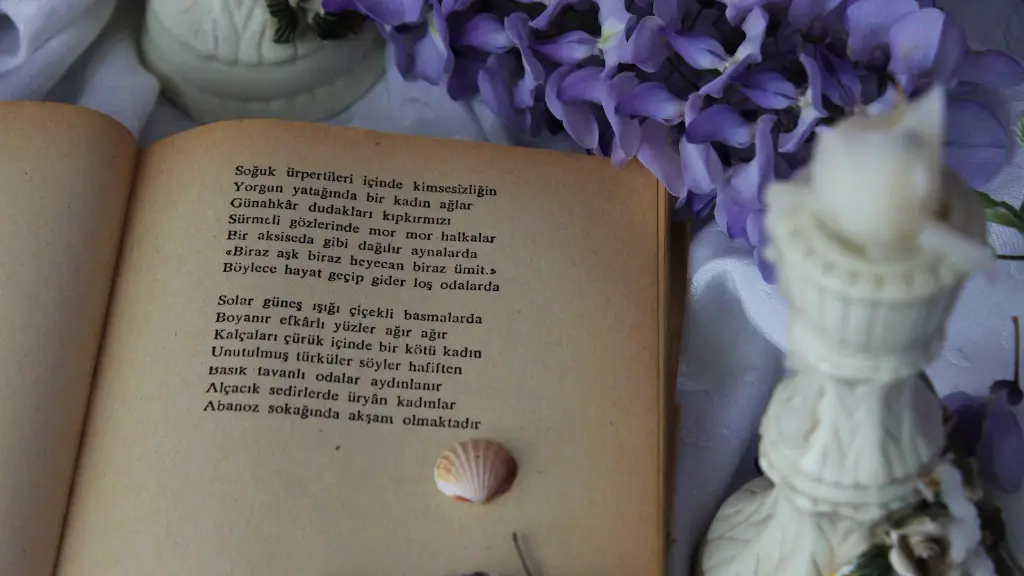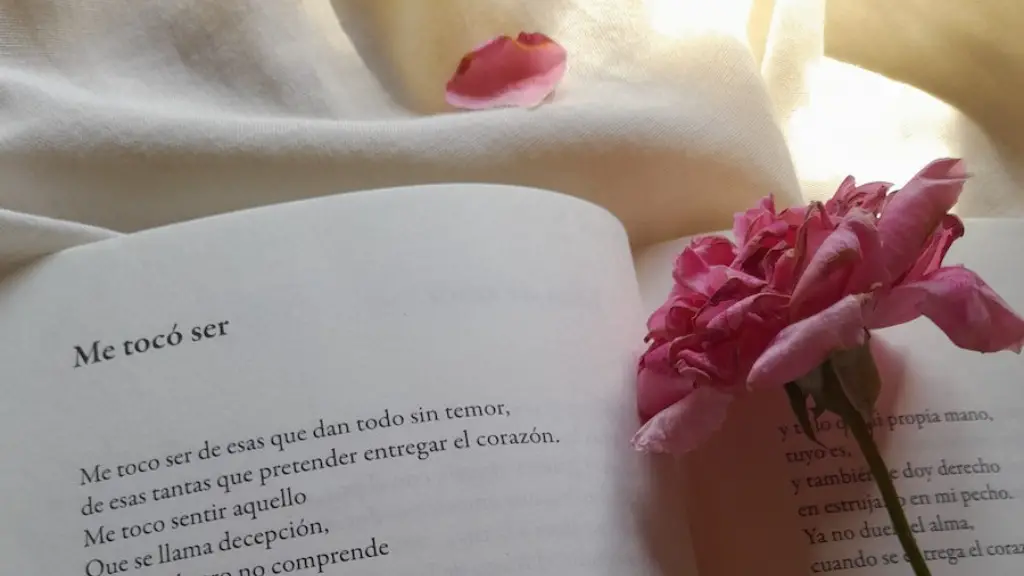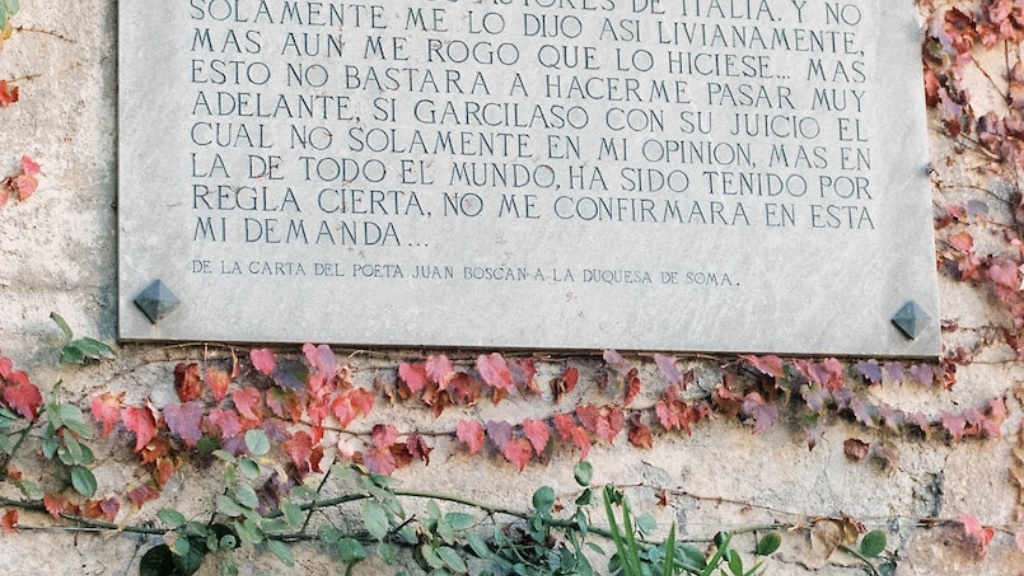What Is Not Poetry
Poetry has been a part of humanity for thousands of years. It is an ancient form of communication that combines the beauty of language with the power of the imagination. But what exactly is poetry, and what isn’t? It is an important distinction to make, because it helps us to understand what we are getting out of the experience of reading or writing poetry.
It is a broad definition that poets and poets themselves have been attempting to define over the centuries. While there is no single correct answer, certain elements of poetry are seen as essential in a literary piece to be considered poetry. These include the use of rhythm and meter, word play, symbolism, imagery, and poetic form. It does not, however, have to contain all of these elements.
At the same time, there are certain elements which are not considered part of the traditional definition of poetry. These include jokes, riddles, puns, and stories. While these elements can enhance a work of poetry, they are not necessary in order to make the work poetic.
Another element often excluded from the definition of poetry is rhyme. While rhymes can be very pleasing to read, they are not essential. In fact, many modern poets prefer to shun rhymes as they feel they can limit the scope of the poem.
On the other hand, there are elements of writing which are not included in the definition of poetry at all. These include prose, essays, journal entries, and anything else that is not rooted in poetic forms or conventions. These forms of writing may still contain elements which are poetic, such as imagery and metaphor, but they are not considered to be poetry in the traditional sense.
When looking for what distinguishes poetry from other forms of writing, then it is important to look for the elements which are essential for a literary work to be considered poetry. These elements include elements such as form, imagery, symbolism, and wordplay. Rhyme and meter are sometimes present, but not always essential. Anything else that does not adhere to these criteria is not typically considered to be poetry.
Writing Styles
The style of writing employed by poets can vary widely. While some choose traditional and structured forms such as sonnets or villanelles, others may opt for a more free-flowing and unstructured approach. In addition to the rhythms and meter of poetry, poets may also employ a variety of literary devices to enhance their work, such as alliteration, metaphor, and simile.
The goal of most poets, however, is to evoke an emotional or intellectual response from the reader. This is why using symbols, imagery, and emotional language is so important. Poetry is meant to be an emotional experience, and not an exercise in the use of the English language.
Music
Although many people think of music and poetry as being closely linked, in reality, the two art forms are quite distinct. In fact, music is most often excluded from the definition of poetry because it does not rely upon language in the same way as poetry does. Music, instead, is communicated through sound rather than words.
It is certainly true that there are elements of poetry which overlap with music, such as rhythm and meter, but these are not essential for a piece of writing to be considered a poem. Music does, however, often contain themes and messages which can be relevant to poetry.
Cinema
Cinema is another art form which is not usually considered to be poetry. This is because cinema relies on visual images and sound rather than words in order to communicate a story.
Just like music, cinema can also contain parts which overlap with poetry. For example, the use of symbolism, imagery, and metaphor in a film can be very similar to the use of these elements in a poem.
However, cinema is primarily a visual art form, and so it is not considered to be part of the definition of poetry, which relies more heavily upon the use of language.
Spoken Word
Spoken word is a type of poetry which is widely popular with modern audiences. This form of poetry relies heavily upon spoken language, as opposed to writing. In spoken word, poets employ a variety of devices such as alliteration, puns, and rhythm to create meaning.
However, despite its popularity, spoken word is not necessarily considered to be part of the definition of poetry. This is because traditional poetry relies more heavily on the use of language, while spoken word relies more heavily on the spoken performance of the poem.
Poetic License
When discussing what is and is not poetry, it is important to remember that the definition is often up for debate. Poets and writers often use a variety of approaches and techniques in their work, and some of these may be unorthodox or non-traditional.
While it is important to recognize the elements which are considered to be essential to the definition of poetry, it is also important to recognize the diversity of approaches which can be found in the work of authors.
For example, a poet may decide to use rhyme in one work and not in another, or use meter in one poem and not in another. The key is to recognize the diversity of approaches and techniques which may be used in creating poetry.
The Human Experience
Poetry has long been a way of expressing the human experience. It has been used to convey both joy and sorrow, love and heartache. Poetry is a way of giving voice to the often inexpressible emotions which exist within the heart of the human being.
Poetry is a way of connecting with the reader on a deep and intimate level. By conveying emotions, ideas, and thoughts in poetic language, the poet is able to create a powerful bond with his or her audience. Poetry is not just about the words, but about the experience which is shared in between poet and reader.
Audience and Appreciation
Poetry is not only about the words, but about the audience and the appreciation of the poet’s work. The poet must be able to capture the attention of the reader, and then hold onto it in order to make an impact with their work. Poetry without an appreciative audience is like a tree without any leaves or fruit: it may exist, but it cannot thrive.
The poet must also be able to convey his or her thoughts and feelings in a way which is accessible and interesting to the reader. This requires the poet to develop a strong understanding of the language, as well as a mastery of poetic form. The poet must be able to captivate the reader with the aesthetics of their work, as well as the emotions which they are attempting to convey.
Writing Intentionality
The poet’s intentionality is also a key element in defining what is and is not poetry. A poem should have an intention beyond just conveying information. A poem should have something to say, and should attempt to convey some kind of emotion or idea in an interesting and engaging manner.
Therefore, although a poem may contain factual information, if it does not have some kind of creative impetus or purpose, then it cannot be considered to be a poem. Unless the poet is attempting to convey something beyond the words which are being used, then the work is not considered to be poetry.
Summary
To summarize, poetry is an ancient and highly respected art form. It is defined by the use of certain elements, such as form and imagery, but it is not reliant upon the use of structural or traditional devices such as rhyme and meter. It is not a genre of writing, but rather an experience which is created when the poet conveys their thoughts and feelings in an engaging and creative manner. Poetry can overlap with other art forms, such as music and cinema, but it is primarily a verbal form of communication which relies upon the use of language.


